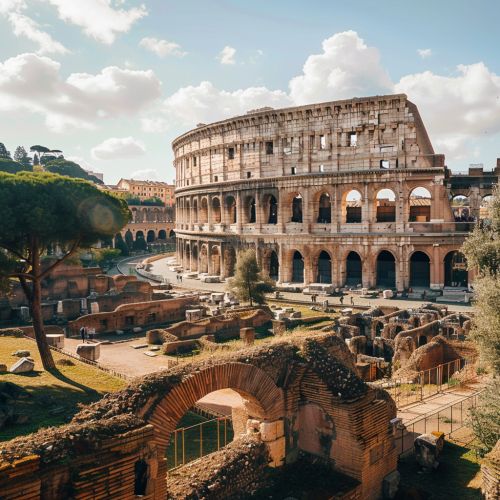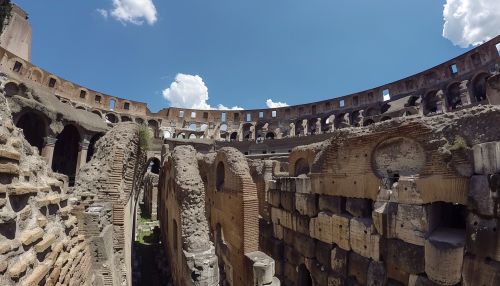Fall of the Western Roman Empire
Background
The Western Roman Empire was the western part of the Roman Empire which, later, became known as The Holy Roman Empire. The eastern part became the Byzantine Empire, with its capital at Constantinople (modern Istanbul). The Western Roman Empire existed intermittently in several periods between the 3rd century AD and the 5th century.
Decline of the Western Roman Empire
The decline of the Western Roman Empire refers to the period of gradual societal collapse after a period of decline that began in the early 4th century, when the Roman Empire's vast expanse was severed into distinct political entities. The Western Roman Empire began to disintegrate in the early 5th century as Germanic invasions overwhelmed the capacity of the Empire to assimilate the invaders.
Economic Troubles and Overreliance on Slave Labor
Even as Rome was under attack from outside forces, it was also crumbling from within thanks to a severe financial crisis. Constant wars and overspending had significantly lightened imperial coffers, and oppressive taxation and inflation had widened the gap between rich and poor. In the hope of avoiding the taxman, many members of the wealthy classes had even fled to the countryside and set up independent fiefdoms. At the same time, the empire was becoming increasingly dependent on a slave labor force, further stalling any potential societal progress.
The Arrival of the Huns and the Migration of the Barbarian Tribes
The arrival of the Huns and the migration of the Barbarian tribes were another significant factor in the fall of the Western Roman Empire. The Barbarian attacks on Rome partially stemmed from a mass migration caused by the Huns’ invasion of Europe in the late 4th century. When these Eurasian warriors rampaged through northern Europe, they drove many Germanic tribes to the borders of the Roman Empire. The Romans grudgingly allowed members of the Visigoth tribe to cross south of the Danube and into the safety of Roman territory, but they treated them with extreme cruelty. According to the historian Ammianus Marcellinus, Roman officials even forced the starving Goths to trade their children into slavery in exchange for dog meat.
Invasion by Barbarian Tribes
The most straightforward theory for Western Rome’s collapse pins the fall on a string of military losses sustained against outside forces. Rome had tangled with Germanic tribes for centuries, but by the 300s “barbarian” groups like the Goths had encroached beyond the Empire’s borders. The Romans weathered a Germanic uprising in the late fourth century, but in 410 the Visigoth King Alaric successfully sacked the city of Rome. The Empire spent the next several decades under constant threat before “the Eternal City” was raided again in 455, this time by the Vandals. Finally, in 476, the Germanic leader Odoacer staged a revolt and deposed the Emperor Romulus Augustus. From then on, no Roman emperor would ever again rule from a post in Italy, leading many to cite 476 as the year the Western Empire suffered its deathblow.
The Fall
The fall of the Western Roman Empire was the loss of central political control in the Western Roman Empire, a process in which the Empire failed to enforce its rule, and its vast territory was divided into several successor polities. The Roman Empire lost the strengths that had allowed it to exercise effective control over its Western provinces; modern historians posit factors including the effectiveness and numbers of the army, the health and numbers of the Roman population, the strength of the economy, the competence of the Emperors, the internal struggles for power, the religious changes of the period, and the efficiency of the civil administration. Increasing pressure from invading barbarians outside Roman culture also contributed greatly to the collapse. The reasons for the collapse are major subjects of the historiography of the ancient world and they inform much modern discourse on state failure.
See Also


